| |
Fragile and Temporary
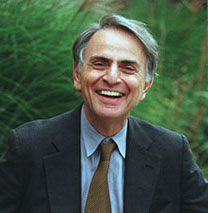
Carl Sagan
Nov.9, 1934 - Dec. 20, 1996
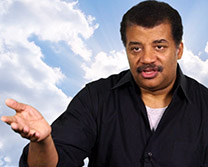
Neil deGrasse Tyson
October 5, 1958 -
Astrophysicist Neil deGrasse Tyson spoke about it this way: “You will never find scientists leading armies into battle. You just won’t. Especially not astrophysicists—we see the biggest picture there is. We understand how small we are in the cosmos. We understand how fragile and temporary our existence is here on Earth. We understand there are bigger problems we need to solve as a species than what God you pray to.
Any time scientists disagree, it’s because we have insufficient data. Then we can agree on what kind of data to get; we get the data; and the data solves the problem. Either I’m right or you’re right or we’re both wrong. And we move on. That kind of conflict resolution does not exist in politics or religion. It does not exist in so much of what we do as human beings on this Earth that it’s almost tragic.”
Image credits for this page:
Carl Sagan: NASA
Neil deGrasse Tyson: Business Insider
Lawrence Krauss: Arizona State University, Photo by Tom Story.
Stuart Kaufman: CN Publications, Photo by Joshua Brown
Brian Edward Cox: BBC Science.
Please read: About images and copyright.
|
|
 |
|
R E D E F I N I N G  T H E T H E  S A C R E D: S A C R E D: R E I M A G I N I N G R E I M A G I N I N G  T H E T H E  H O L I D A Y S H O L I D A Y S
Carl Sagan's words about the Pale Blue Dot photo:
"From this distant vantage point, the Earth might not seem of any particular interest. But for us, it's different. Consider again that dot. That's here. That's home. That's us. On it everyone you love, everyone you know, everyone you ever heard of, every human being who ever was, lived out their lives. The aggregate of our joy and suffering, thousands of confident religions, ideologies, and economic doctrines, every hunter and forager, every hero and coward, every creator and destroyer of civilization, every king and peasant, every young couple in love, every mother and father, hopeful child, inventor and explorer, every teacher of morals, every corrupt politician, every "superstar," every "supreme leader," every saint and sinner in the history of our species lived there – on a mote of dust suspended in a sunbeam.
The Earth is a very small stage in a vast cosmic arena. Think of the rivers of blood spilled by all those generals and emperors so that in glory and triumph they could become the momentary masters of a fraction of a dot. Think of the endless cruelties visited by the inhabitants of one corner of this pixel on the scarcely distinguishable inhabitants of some other corner. How frequent their misunderstandings, how eager they are to kill one another, how fervent their hatreds. Our posturings, our imagined self-importance, the delusion that we have some privileged position in the universe, are challenged by this point of pale light. Our planet is a lonely speck in the great enveloping cosmic dark. In our obscurity – in all this vastness – there is no hint that help will come from elsewhere to save us from ourselves.
The Earth is the only world known, so far, to harbor life. There is nowhere else, at least in the near future, to which our species could migrate. Visit, yes. Settle, not yet. Like it or not, for the moment, the Earth is where we make our stand. It has been said that astronomy is a humbling and character-building experience. There is perhaps no better demonstration of the folly of human conceits than this distant image of our tiny world. To me, it underscores our responsibility to deal more kindly with one another and to preserve and cherish the pale blue dot, the only home we've ever known."
Stardust and Self-organization
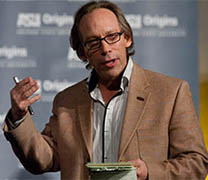 Theoretical physicist and cosmologist, Lawrence Krauss:
Theoretical physicist and cosmologist, Lawrence Krauss:
“Every atom in your body came from a star that exploded. And, the atoms in your left hand probably came from a different star than your right hand. It really is the most poetic thing I know about physics: You are all stardust. You couldn’t be here if stars hadn’t exploded, because the elements - the carbon, nitrogen, oxygen, iron, all the things that matter for evolution and for life - weren’t created at the beginning of time. They were created in the nuclear furnaces of stars, and the only way for them to get into your body is if those stars were kind enough to explode. …”.
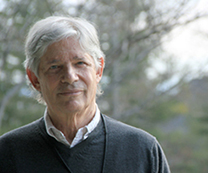
Stuart Kauffman is famous for arguing that biology must look beyond Darwin. From molecules to ecosystems, he sees self-organization as the twin to natural selection in giving order to living systems. |
You are probably familiar with snowflakes. Hydrogen bonds with oxygen to form water, a simple molecule. At the right temperature, water self-organizes into symmetric crystals, and slight differences in the path of descent causes the diversity of snowflakes.
Similarly, biologists like Stuart Kauffman have recently shown that the primordial soup of elements that formed the Earth is self-organizing, forming itself into macro molecules such as RNA and protein and eventually into more complex organisms through chemical reactions.
Following the laws of chemistry, our planet, with the right amount of heat and moisture, combined with the molecular matter of the Universe, became life-generating.
That gives a whole new level of understanding to the idea of “Mother Earth”.
Cosmologist Michael Dowd puts it this way, “We did not come into this world…..we grew out of it, just like an apple grows from an apple tree. We are not separate beings on earth, living in a universe….we are a mode of being of earth, an expression of the universe…..we are the universe becoming conscious of itself….we are stardust that has begun to contemplate the stars……four billion years ago, our planet was molten rock, and now it sings opera.”
Understanding the Science
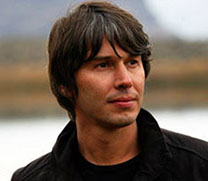 Physicist Brian Edward Cox is passionate about the need for all of us to understand enough science to be aware of what is happening on the planet. As he says, “The aim of particle physics is to understand what everything’s made of, and how everything sticks together. By everything I mean me and you, the Earth, the Sun, the 100 billion suns in our galaxy and the 100 billion galaxies in the observable universe. Absolutely everything. … If people don’t have an understanding of what science is and what scientists do, then they can tend to think that global warming, for example, is just a matter of opinion." Physicist Brian Edward Cox is passionate about the need for all of us to understand enough science to be aware of what is happening on the planet. As he says, “The aim of particle physics is to understand what everything’s made of, and how everything sticks together. By everything I mean me and you, the Earth, the Sun, the 100 billion suns in our galaxy and the 100 billion galaxies in the observable universe. Absolutely everything. … If people don’t have an understanding of what science is and what scientists do, then they can tend to think that global warming, for example, is just a matter of opinion."
By celebrating “The Pale Blue Dot” each spring, we remind ourselves to stop and think, to pay attention to what science is showing us right now in our modern, knowledgeable world.
We wake up to an awareness that each one of us is a product of millions of years of combinations and permutations of the matter and energy of life, of evolution and the chance encounters of our ancestors, and thus see every living being as a miracle.
And that is the message we celebrate each February, when we celebrate The Pale Blue Dot.
|

